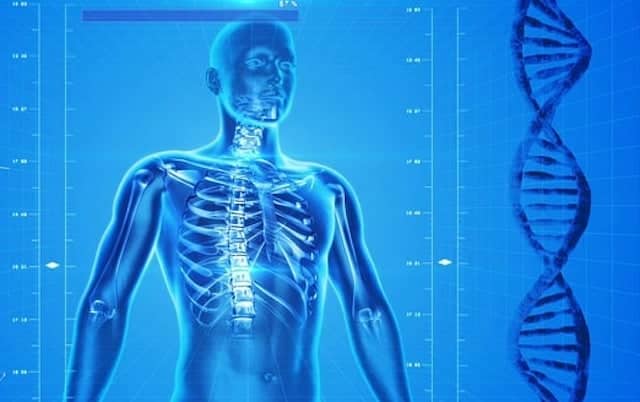The things that people like and dislike lie at the heart of their personality, shaping everything from their choice of friends to the lifestyle they live and their career. Yet preferences are also shrouded in mystery. Tracking down the influences that lead to people’s tastes and opinions is a challenging task fraught with uncertainty. Still, many psychologists have had a go, and their results have often been surprising. Here are ten strange things psychologists have learned about preferences.
Related: 10 Things That Restored Our Faith in Humanity
10 Minecraft Satisfies Children’s Innate Urges
The popular video game Minecraft is a rarity in modern entertainment. It can occupy kids and adults for hours. Keeping children engaged with one thing for so long is an impressive feat in a world that is seriously worried about decreasing attention spans. Now, psychologists think they know how Minecraft does it. In part, it is because “sandbox” games like Minecraft satisfy the same psychological urge in children as real sandboxes.
Like other mammals, young humans use play to develop skills to help them survive and mate. Because human survival is heavily based on the ability to make things, like shelters and tools, children feel a strong urge to do so during their playtime. It is also exactly what Minecraft allows them to do, explaining why they like it so much. The game’s many creative possibilities and its survival and social aspects may also help.[1]
9 Thrill Seeking Is Biological
Some people claim that the rush of jumping out of a plane or riding a rollercoaster feels like nothing else, while others are reluctant to ever let their feet leave the ground. The former group might accuse the latter of being scared or insist they will love these activities once they try them. Still, psychological studies suggest that this is not the case. A person’s preference for cautiousness may be explained by their hormones.
Specifically, the hormones dopamine and cortisol help explain why some people prefer thrill seeking and others like to be cautious. Dopamine is sometimes referred to as a pleasure hormone, as it is present when people do things they like. On the other hand, cortisol is a stress hormone. When a thrill seeker does something like ride a rollercoaster, their dopamine levels go up, and their cortisol levels go down. However, their cautious counterparts experience the opposite effect.[2]
8 Attractive Qualities Can Become Unattractive
It is common for people’s preferences to change over time. After all, time gives them a chance to learn more about something. However, new information does not always cause people’s tastes and opinions to shift. Sometimes, it is the very same qualities that make them like something or someone in the first place. This can happen in relationships, and the phenomenon is known in psychology as “fatal attraction.”
An example of fatal attraction would be liking a partner because of their powerful job, then becoming unhappy when they spend too much time at work. This makes some sense, but it is really strange that the more strongly they are attracted to that quality at first, the more likely it is to cause the couple to break up later. This could be because people first become attracted to very prominent traits of others, which may be extreme.[3]
7 Why “Sadbait” Is Surprisingly Popular
“Sadbait” is a lesser-known relative of “ragebait,” a common type of online content that tries to make people so angry that they cannot resist engaging with it. As the name implies, sadbait tries to do the same thing by making people sad instead of angry. It often features people crying and sharing stories of their hardship, along with gloomy music. Although it sounds like something people should want to avoid, it is surprisingly popular.
Experts have attributed its success to a preference for strong displays of emotion online. This is a highly effective way for creators to hook viewers, but sad clips are especially potent because sharing emotions that are usually private can make viewers feel close to the creator. However, not all sadbait needs to show real people. AI images have been just as good at evoking feelings and getting engagement, and so have animated cats.[4]
6 Some People Prefer Parasocial Relationships
When people feel close to a content creator or celebrity they have not met in real life, what they have is called a “parasocial relationship.” These are actually very common. Studies from 2024 found that 52% of more than 1,080 people from the UK and the U.S. reported having one, and over a third said they felt close to a YouTuber. Most surprisingly, some preferred the relationship with their YouTuber over some real-life relationships.
They said watching YouTube videos cheered them up more than speaking to casual friends, such as neighbors and co-workers. One psychologist from the study suggested that this is because their parasocial partners cannot reject them or tell them they are too busy. They can log on anytime and listen to someone they feel close to. As for the creators, many feel connected to their followers but do not feel expected to reach out to them individually.[5]
5 People Prefer Romance in Winter
People’s preferences can be shaped by aspects of the world around them, such as the weather. For example, they are likely to prefer hot drinks to iced ones during winter. But sometimes the connection between the climate and their inclinations is less clear. For instance, research shows that people are more likely to choose to watch romantic movies during cold months. Surprisingly, the reason may be related to ancient survival instincts.
Many species huddle together to survive in the cold. Humans do something similar, spending more time indoors with others. Yet nobody consciously decides to do this, and if the theory of “social thermoregulation” is true, they do not have to. The theory suggests that cold snaps cause people to seek more social connections, which causes them to spend more time with others. Romantic movies also satisfy that desire for social connection, so people prefer them during winter.[6]
4 Liking Laughter Isn’t Uniquely Human
Despite the popularity of sadbait, it is probably fair to say people prefer to laugh. Laughing is something babies do from as young as three months old, and by eight months, they know how to make adults do it. As they get older, the ways they evoke laughter become more complex. Practical jokes, for example, require people to see things from their victim’s perspective, anticipating their expectations and reactions. So it is surprising to learn that animals like jokes too.
Great apes have been observed teasing each other, and dolphins, elephants, parrots, and even rats appear to enjoy a laugh. Charles Darwin observed that dogs also seem to have a sense of humor. Of course, it is hard to know from watching them if they are laughing or why. Humans are thought to like laughing because it helps strengthen social bonds, but scientists do not know yet if this is true for other species.[7]
3 Sharing Food Shapes Feelings
Shared meals are another means by which people build stronger social connections. They have likely been a feature of human societies since cavemen were cooking over campfires, and they have actually been shown to make eating more pleasurable. Eating produces endorphins, which are hormones that make people feel good. And when people do an activity at the same time as another person, they produce up to twice as many endorphins. This has an interesting impact on their preferences and choices.
For example, people seem to place more trust in those they have shared meals with. One study from the University of Chicago showed that people preferred to invest money with those they had eaten with, even if they only shared some candy. The research also showed that people who shared snacks were quicker at reaching an agreement during negotiations, suggesting that people may be less rigid in their preferences when they conflict with the wishes of others they trust.[8]
2 Comfort Foods May Not Exist
Supposed “comfort foods” may vary by culture, but many think the concept is universal. Comfort foods are meant to be familiar, often high-calorie dishes that people turn to in times of crisis, like ice cream after a breakup. However, the truth about whether people really prefer certain foods when there is turmoil in their lives is more complex. Some research suggests that people dealing with problems actually like to try new things.
Another unusual finding about comfort foods is that men prefer to eat them when celebrating, not for comfort. Women are more likely to eat them when in a low mood, although respondents in that study said such foods made them feel guilt, not joy. People do not necessarily prefer sweet foods when struggling or sad, either. Pizza actually topped a poll of America’s favorite comfort foods, and chicken soup is also a popular choice.[9]
1 Randomness Helps Reveal True Preferences
Supermarkets confront shoppers with shelves full of competing versions of the same products. The number of slightly different variations of a single product can be even more extreme online. There comes a point where it is all too much, when people are presented with so many choices that they cannot form a preference. This is known as “analysis paralysis.” It is often underpinned by a fear of making a bad choice and missing out on something better.
People often try to solve analysis paralysis by seeking more information about the choices, but this rarely helps. What actually seems to work is letting fate play a role. One study in Switzerland found that by flipping a coin to see whether they should stick with an initial decision, people actually showed more satisfaction with their choice. Strangely, they were even more likely to prefer their first choice when the coin told them to change it.[10]















